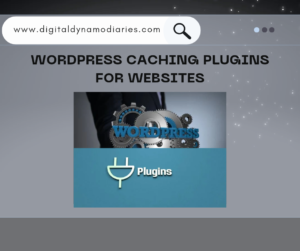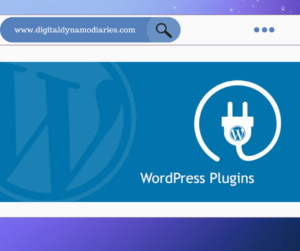How to Create a Membership Site with WordPress
Creating a membership site with WordPress is an excellent strategy for monetizing content, building a community, and offering exclusive products or services. A membership site allows you to provide premium content accessible only to registered users or paying members. This model can be used for a variety of purposes, such as offering online courses, creating a community forum, selling digital products, or providing premium content such as articles, videos, and webinars. This comprehensive guide will walk you through each steps to create a successful membership site using WordPress, from initial setup to ongoing management and promotion.
What is a Membership Site on WordPress?
A membership site is a website where access to certain content, features, or services is restricted to members who have registered or paid for access. Membership sites can range from simple blogs offering premium articles to complex e-learning platforms with multiple courses and levels of access. WordPress, with its extensive ecosystem of themes and plugins, provides a flexible and powerful platform for building and managing a membership site.
Benefits of a Membership Site
These are the benefits of using a membership site:
– Recurring Revenue: Generate consistent income through subscriptions or membership fees.
– Engaged Community: Foster a dedicated community of users around your content or services.
– Controlled Access: Restrict access to valuable content, creating exclusivity and added value for members.
– Expandability: Easily expand and add new features, content, and membership levels as your site grows.
Step-by-Step Guide to Creating a Membership Site with WordPress
The following steps are the guidelines for creating a membership site with WordPress:
Step 1: Choose Your Hosting and Domain
The foundation of your membership site is reliable hosting and a memorable domain name.
Selecting a Hosting Provider
– Shared Hosting: Affordable and easy to manage, suitable for beginners.
– Managed WordPress Hosting: Optimized for WordPress with enhanced performance and security.
– VPS Hosting: Offers more control and resources, suitable for growing sites with higher traffic.
Recommended Provider for any of these hosting services is LyteHosting
Choosing a Domain Name
– Relevance: Ensure your domain reflects your site’s purpose.
– Simplicity: Keep it short and easy to remember.
– Branding: Make it unique and easy to spell.
You can register your domain through an hosting provider such as LyteHosting.
Step 2: Install WordPress
Most hosting providers offer a one-click WordPress installation feature. Follow these steps:
1. Log into your hosting account.
2. Find the WordPress installation option in the control panel.
3. Follow the on-screen instructions to complete the installation.
4. Access your WordPress dashboard at `yourdomain.com/wp-admin`.
Step 3: Select and Install a Membership Plugin
A membership plugin is essential for managing subscriptions, member access, and content restriction. Here are some top choices:
MemberPress
– Pros: Comprehensive features, easy setup, built-in payment integrations.
– Cons: Higher cost compared to other plugins.
Restrict Content Pro
– Pros: User-friendly, excellent customer support, robust content restriction options.
– Cons: Fewer features than MemberPress.
WooCommerce Memberships
– Pros: Seamlessly integrates with WooCommerce for product-based memberships.
– Cons: Requires WooCommerce and additional extensions for full functionality.
Installing Your Chosen Plugin
1. Navigate to “Plugins” in your WordPress dashboard.
2. Click “Add New” and search for your chosen plugin.
3. Click “Install Now” and then “Activate”.
Step 4: Configure Your Membership Settings
After installing your plugin, it’s time to set up your membership structure.
Setting Up Membership Levels
– Define Levels: Create different tiers (e.g., Basic, Premium, VIP) with varying benefits.
– Price Points: Set competitive pricing for each level.
Integrating Payment Gateways
– Supported Gateways: Most plugins support PayPal, Stripe, and other major gateways.
– Setup: Follow the plugin documentation to connect and configure payment methods.
Access Rules
– Content Protection: Use the plugin’s settings to restrict access to posts, pages, or sections based on membership level.
– Drip Content: Schedule content release over time to keep members engaged.
Step 5: Design Your Membership Site
A well-designed site enhances user experience and keeps members coming back.
Choosing a Theme
– Responsive Design: Ensure your theme looks good on all devices. Recommended themes: Astra, GeneratePress, Divi.
– Customization: Select a theme that is easy to customize and aligns with your brand.
Customizing Your Theme
– WordPress Customizer: Access it from your dashboard to adjust colors, fonts, and layouts.
– Page Builders: Use Elementor, Beaver Builder, or Divi Builder for advanced customization.
Creating Key Pages
– Homepage: Showcase the benefits of your membership, key features, and testimonials.
– Registration Page: Use your plugin’s shortcodes to create an easy-to-navigate registration page.
– Login Page: Ensure it’s straightforward for members to log in and access their content.
– Member Dashboard: Provide a central hub for members to manage their accounts, view content, and update their information.
Step 6: Add and Protect Content
Your content is the core of your membership site. Plan and organize it effectively.
Creating Valuable Content
– Types of Content: Offer a mix of blog posts, videos, webinars, downloadable resources, and online courses.
– Content Calendar: Plan your content schedule to ensure consistent updates.
Protecting Content
– Content Restriction: Use your membership plugin to set access rules for each piece of content.
– Categories and Tags: Organize your content with categories and tags to make it easier for members to find what they need.
Step 7: Test Your Membership Site
Thorough testing is crucial to ensure a smooth user experience.
Testing User Experience
– Create Test Accounts: Register as different membership levels to experience the site from a user’s perspective.
– Payment Processing: Make test transactions to ensure payment gateways are working correctly.
Checking Content Restrictions
– Access Control: Verify that only members with the appropriate access level can view protected content.
– Content Drip: Ensure scheduled content releases as planned.
Step 8: Promote Your Membership Site
Marketing your site effectively will attract members and drive growth.
SEO Optimization
– Keywords: Research and integrate relevant keywords into your content.
– SEO Plugins: Use tools like Yoast SEO or Rank Math to optimize your site for search engines.
Social Media Marketing
– Platforms: Promote your site on platforms where your target audience is active.
– Content Sharing: Share teasers, snippets, and success stories to entice potential members.
Email Marketing
– Build a List: Use sign-up forms and lead magnets to grow your email list.
– Newsletters: Send regular updates and exclusive content to keep subscribers engaged.
Step 9: Engage with Your Members
Building a loyal community requires continuous engagement.
Regular Updates
– Content: Keep your site fresh with regular content updates.
– Member Communication: Send emails or notifications about new content, features, or events.
Community Building
– Forums and Groups: Create spaces for members to interact and share ideas.
– Events: Host webinars, Q&A sessions, or live chats to foster a sense of community.
Step 10: Monitor and Improve
Continuous improvement ensures long-term success.
Analytics and Feedback
– Monitor Performance: Use tools like Google Analytics to track site traffic, member engagement, and conversion rates.
– Collect Feedback: Encourage members to provide feedback through surveys or direct communication.
Iterate and Improve
– Analyze Data: Use analytics to identify areas for improvement.
– Implement Changes: Regularly update your site based on member feedback and performance data.
Conclusion
Creating a membership site with WordPress is a rewarding endeavor that can provide significant value to both you and your members. By following these detailed steps, you can build a robust, engaging, and profitable membership site. Remember, the key to success lies in delivering consistent value, engaging with your community, and continuously improving your offerings. With dedication and the right approach, your WordPress membership site can thrive and grow for years to come.


